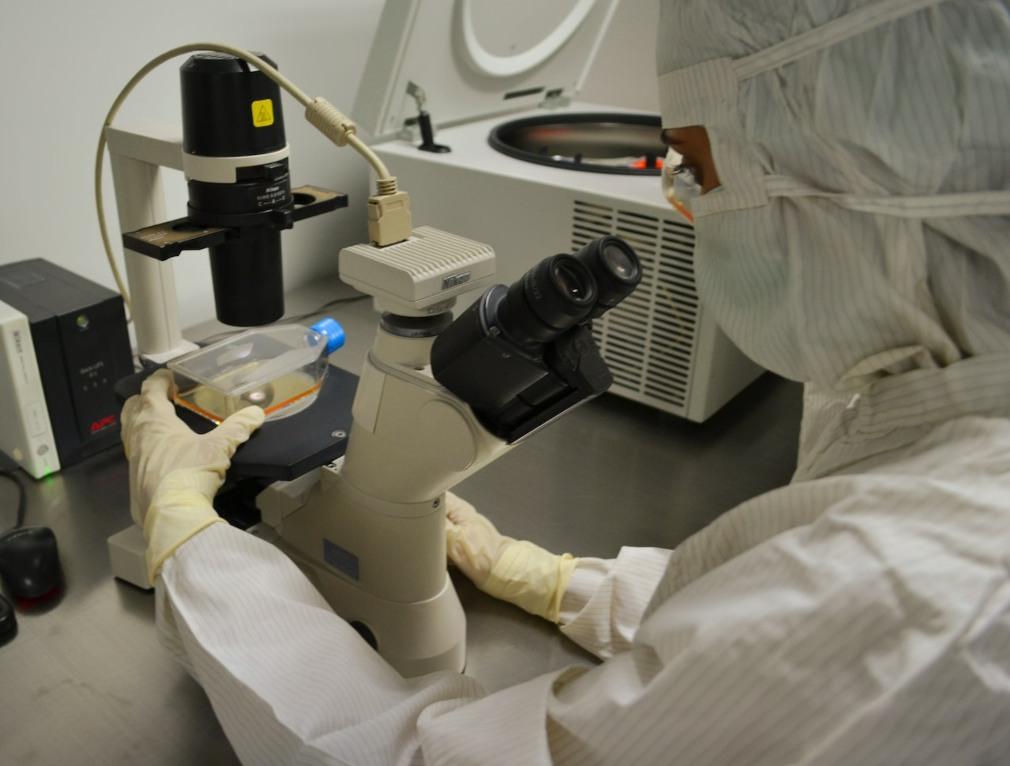Firefly Luciferase (FLuc) mRNA is a practical and versatile reporter gene commonly used for functional studies. It will express a luciferase protein, originally isolated from the firefly Photinus pyralis, emitting luminescence upon oxygen and ATP oxidation.
Table of Contents
The mRNA Structure
mRNA is the intermediate molecule between DNA and proteins. The central dogma states that genetic information resides in the DNA and that mRNA transcribes the DNA sequence into a protein. mRNA is a sugar-phosphate backbone with bases attached through phosphodiester bonds and pentose ribose. The mRNA sequence complements the gene sequence from which it was transcribed. The mRNA sequence has three parts: the 5′ end provides binding sites for proteins that initiate polypeptide synthesis; the sequence in the middle codes for the sequence of amino acids that form the protein, and the 3′ end controls mRNA stability. The mRNA sequence is organized into groups of three bases, called codons, which are matched to one of six different amino acids. Each codon’s sequence of the amino acid coded for is determined by its position in the gene.
The FLuc mRNA is a codon-optimized, firefly luciferase nucleotide sequence from Photinus pyralis. The mRNA is entirely in vitro transcribed, cap 0, cap 1, and polyA tail capped.
The mRNA is encapsulated into 4N4T-LNPs with a lipid mole ratio of NP lipid:mRNA 2-8. The lipids were selected from the commercial ionizable lipid library of DLin-KC2-DMA, DLin-MC3-DMA, and DLin-DODAP-DMA/DSPC/Cholesterol: PEG-DMG2000. SAXS analyses showed a maximum average dLS diameter and volume for the LNPs near one nm-1.
LNPs were injected into VACV-infected and uninfected HeLa cells along with a cotransferred Rluc mRNA. Luciferase activity was measured by a luminometer and normalized to internal control Rluc activity to calculate the relative translation rate. In vitro, potency correlates negatively with the lipid and positively with the dose of mRNA.
The mRNA Function
FLuc mRNA carries the catalytically active luciferase protein, originally isolated from the firefly Photinus pyralis. It emits bioluminescence after oxidation of the luciferin substrate, producing light in response to oxygen and ATP. This catalog mRNA is capped with a proprietary co-transcriptional capping method that produces the naturally occurring Cap 1 structure and is polyadenylated and optimized for mammalian systems to function as fully processed mature mRNA.
The 5′ cap structures are essential for many mRNA functions, including recognition by translation initiation factors. The N7-methylated guanosine on the first transcribed nucleotide of an mRNA is essential for this recognition and protects mRNAs from degradation by decapping enzymes. In addition, a high 5′ cap concentration has been found to increase translation efficiency significantly.
The algorithm sequence, with optimization, was used to generate an mRNA that was highly resistant to solution degradation and displayed robust in-cell expression. This simultaneous increase in in-solution stability and in-cell protein expression directly results from the rational design principles employed in mRNA development.
To test the delivery efficacy of 4N4T-LNPs, male BALB/c mice were intramuscularly injected with GFP or FLuc mRNA encapsulated in 4N4T-LNPs and analyzed for cellular uptake using an IVIS imaging system. In both cases, the mRNAs could efficiently penetrate the cells and transfect them in a scalable fashion.
The mRNA Assembly
To generate mRNA for the FLuc construct, an assembly ultra kit with the template pT7-12A-Fluc and PCR products containing mRNA elements in combination with the B11-Fc coding fragment from BoNT/A-specific camelid VHHs fused to human IgG Fc.
The mRNA was then capped with adenosine triphosphate, thymidylate, and guanidine nucleotides to form a m7G cap vitro. The mRNA was then combined with the m7G-capped Nluc mRNA and injected into HEK293T cells and mouse primary fibroblasts or bone marrow-derived dendritic cells (mBMDC).
Using a luminometer, the mRNA expression levels were determined by measuring luciferase activity in the transfected cell cultures. Relative luciferase activity was obtained by dividing the measured Fluc value by the internal control Rluc value.
The mRNA Transfection
mRNA transfection into cells is accomplished by combining the mRNA of interest with a cationic lipid, such as LNP3, to form a polyplex. The polyplex is added to cell culture plates and incubated for some time, after which the expression of the reporter gene can be assessed.
The mRNA of interest is in vitro transcription-coupled to a control mRNA encoding for firefly luciferase (Fluc). FLuc is a luciferase protein that emits bioluminescence in the presence of the luciferin substrate, making it an excellent transfection marker.
A cationic lipid such as LNP3 is then mixed with the mRNA of interest in a ratio that enables the desired mRNA to be delivered into cells. The polyplex is allowed to equilibrate for 15 minutes before being added to the cells.
The reporter mRNA is then allowed to transiently express for the desired amount of time, after which the cell is removed from the plate and analyzed for the presence of luciferase protein. This is done using a microplate reader, and the results can be analyzed using a graphing software program.
Also Read – The Importance of Location in Finding the Ideal Retirement Community




